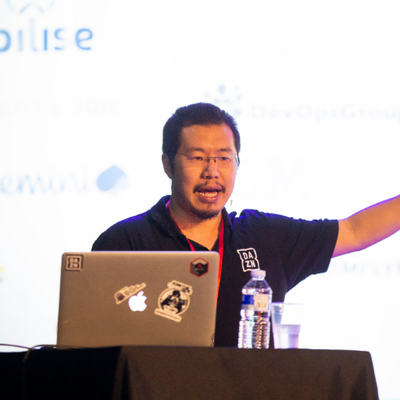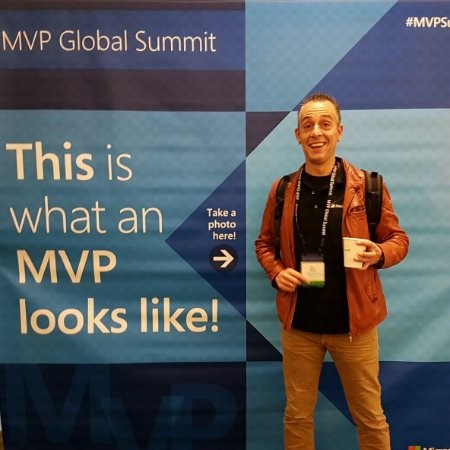Connecting Global
JavaScript Leaders
Our wonderful speakers have presented at 100+ global JavaScript & developer conferences in 30+ countries in the last 12 months, we were truly honoured to have them take part on our 2020 edition.
We'll post links to their slides and presentation recordings in the program below!
Wednesday
19.02
8:45
Welcome & Introduction
-
How thinking small is changing software development big time
The world is changing fast. More precisely, the world is changing at increasing speed. This means things that were not possible five years ago come into reach. Incumbent organizations need to adapt fast to keep up with new competitors that use new technologies easier, faster and better than they do. As a result, every aspect of software changes towards smaller. Even smaller teams or even micro-teams, less management, flatter organizations, even shorter cycles, and smaller components.
by Sander Hoogendoorn
Chief Architect at Quby -
How to Pack your Webpack
A strategy on how to properly configure webpack for your project
by Johannes Ewald
Co-founder at Peerigon Slides -
Svelte: the last framework we need?
Dexter shares his love for svelte, what sets it apart from other frameworks and shows how it enables him to create truly reactive apps.
by Alexander Esselink
Fullstack Consultant at Passionate People -
Serverless gives you wings
How serverless empowers frontend teams to get so much done without needing a backend specialist and enables teams to move super fast.
by Yan Cui
Developer Advocate at Lumigo Slides 10:50
Coffee break
-
Modern Solutions for e2e testing
A new day brings a new framework. This rule applies also for e2e testing tools, which is cool yet frightening. How to swim but not sink in plenty of testing frameworks and have a solid e2e test coverage with minimal effort? Anastasia is going to share her insights on this which might be helpful for every developer who does care about software quality improvement paired with automated testing.
by Anastasiia Dragich
Software Engineer at Booking.com -
Practical A11Y for Web Apps
Accessibility (A11Y) is an often misunderstood topic by developers. We also tend to not see the importance and if we see it, we struggle on getting started because it’s such broad topic. What can we do to improve?
In this talk Bob will explain web accessibility and why it’s such a critical part of our job.
He will explain how to get started in testing and improving your apps using tools and methods that are market standard.
There will be real-world examples from his daily job and he’ll share how to tackle common pitfalls.
After this session, you’ll have enough knowledge to start fixing your front-end’s most low hanging A11Y issues.
by Bob Bijvoet
Front-end Technology Lead at ING -
Micro-interactions with React Spring
In her own words, Emma is a UX Engineer with a passion for design. She has recently transitioned into a UX Engineering role at LogMeIn where she builds Design Systems with React.
by Emma Bostian
Design Systems at LogMeIn -
But, you're not Facebook
This talk started as a humorous joke in twitter and quickly took the React community by surprise. In a very interesting way, Kitze will explore the current trend to over-engineer solutions to common problems in web applications.
by Kitze
Founder at reactacademy.io 12:55
Lunch break
-
Beats, Rhymes and Unit Tests
Hip Hop and Unit Tests. A match made in heaven? Through a mix of audio, video and live performance, Tony will explore Web Audio in an attempt to convince the audience of its suitability for audio transcription. This is a fast paced and highly engaging talk with a crescendo you won’t forget.
by Tony Edwards
Education Outreach at Software Cornwall -
GraphQL Without a Database
Your frontend developers are pushing to get started with GraphQL, but you don’t have the backend capacity to migrate your existing REST APIs to GraphQL? Or you want to have a GraphQL API next to your existing endpoints that are based on REST, without having to rewrite all your controllers? In this talk I’ll show how to wrap existing REST APIs into one single GraphQL endpoint on both the client and server side. This allows you to access the power of GraphQL without having to change any of your existing code or connect to a database.
by Roy Derks
Senior Frontend Developer at React Graphql Academy -
DX is the new black. Learnings from using Nuxt and Storybook at scale.
Last year we started the rebuild of a big e-commerce platform. The main goal was to increase the performance of the application but also to enhance the daily comfort of the developers. The rebuild was done using Nuxt and Vue, and to create a good developer experience we used Storybook to work on the components in an agnostic way. In this talk I will explain how we mixed all these tools together and how we are able to develop great code with a big team.
by Aurélie Violette
Freelance Front-end TechLead at Valtech Slides -
Refactor your life
Noer and Sima share with you 3 main insights they have gained while teaching programming to people with a radically different background. Sima Milli will share her personal story.
by Noer Paanakker & Sima Milli
Education Director & Graduate at Hack your future 15:55
Coffee break
-
Blazor with WebAssembly
One of the latest technologies targeting front-end development that is gaining quite some traction isWebAssembly.
And the latest development stack for it is Blazor! While it’s still in preview mode, it’s considered as prettyinnovative as far as WebAssembly goes.
In this session, you’ll learn what Blazor is, how it uses WebAssembly, and how to get started with it all.
By coding some examples, we’ll be able to investigate several aspects of Blazor’s support forWebAssembly, such as: dependency injection, data access, routing, editing and validation and MVVM.
Come along and discover if this new technology is something for you!
by Don Wibier
Technical Evangelist at DevExpress -
Audio Streaming - Using WebRTC for building your own Voice AIs
The Google Assistant is super popular. Businesses want their own voice AI. Unless you are a manufacturer for tv setup boxes or headphones, you probably don't need to use the Google Assistant, you can integrate a (voice supported) conversational AI within your own existing web/mobile app with the use of Dialogflow and Cloud Speech to Text (STT), Cloud Text to Speech (TTS).
However, implementing audio streaming within (web) applications can become difficult. It's not that the Google APIs are hard to use; those APIs are pretty straightforward. The problem is the combination of all required technology; A front app, WebRTC, microphone streams, audio encoding, sample rates, websockets, a back-end app, Google streaming APIs...
Lee Boonstra, developer advocate for Conversational AI, (and author of the ultimate audio streaming to Speech APIs - guide), will guide you how to implement your own conversational AI within your web application.
by Lee Boonstra
Applied AI Engineer and Developer Advocate at Google Slides -
The Future of Real-time | Offline | Data
Complexity, and the consistent attempts to reduce complexity, are at the core of the evolution of technology. As technology evolves, we then find harder problems to solve and are presented with new challenges. In the client space, we’ve seen innovation that has addressed how we deal with modern application concerns like real-time and offline data while at the same time GraphQL has continued to gain in market share.
What happens when we take the advancements that GraphQL has introduced as a paradigm and combine them with a mental model that all data should be local and offline first, with eventual consistency to your database as a second thought? In this talk, I’ll talk about a data store paradigm that allows developers to work with a single, local database and source of truth, and the idea that you should not have to make more than one write action to have (eventual) consistency across the client and server.
by Nader Dabit
Senior Developer Advocate at AWS -
The state of WebAssembly
Sendil is an experienced developer, speaker and author. He is passionate about JavaScript, Java / Kotlin and Rust. Most importantly, he is very active in the WebAssembly scene. He is the co-founder of WASM-tools and creator of popular projects: KHipster, Webpack-scaffold-PWA, and more.
by Sendil Kumar
Senior Software Engineer at UBER 18:05
Closure
Thursday
20.02
8:45
Welcome & Introduction
9:00
State of the Vuenion 2020
The growth of Vue continues and we are almost ready for Vue 3. As ever Evan You will deliver the State of Vuenion 2020, if we are lucky maybe we see some Typescript code from him ;)
by Evan You
Creator of Vue.js-
Scalable Vue Graphics for the Modern Web
by Dima Vishnevetsky
-
The Future of Vue's Test Utils
With an expanded Vue Test Utils team and with Vue 3 on the horizon, we’ll talk about our plans for 2020. What’s coming in v1?
by Jessica Sachs
Maintainer of @vue/test-utils and Tech Lead at Intent 11:05
Coffee break
11:00
Introduction into the Composition API
Gregg Pollack is the founder of VueMastery.com, the Ultimate Resource for Vue.js developers. Previously he founded Code School, an online software programming school, Envy, a web application development firm, and Starter Studio, Orlando’s first technical accelerator now in its ninth class.
by Gregg Pollack
Teaching developers Vue.js at VueMastery-
Composition API Best Practices
Thorsten will be speaking about Composition API and emerging best practices. Are you ready for some expert level tips?
by Thorsten Lünborg
Core Team Member of Vue.js -
Making eCommerce sexy again with Vue Storefront and Composition API
Vue Storefront is currently the biggest Open Source eCommerce frontend that works with any backend platform and already has more than 60 live shops. For the past 2 years we are constantly improving our solution but we came to the point where architecture became a limitation... so we decided to do a rewrite and use the latest Vue features. As one of the first big projects in the world on Vue 3 we had a chance to explore and adapt new amazing patterns brought by Composition API. During this talk you will learn how using new Vue 3 features can bring developer experience to a completely new level!
by Filip Rakowski
Co-founder of VueStorefront 12:45
Lunch break
13:20
Serverless with Vue and Node.js
We will dip into Serverless, Jam Stack and more.
by Roman Kuba
Engineering Manager at CloudBees Slides-
Climate change and the tech community
An inspirational talk about climate change what we as a community can do to prevent further climate change
by Callum Macrae
Author of Vue.js: Up and Running Slides -
Application Shortcuts with a Renderless Event Component
by Rolf Haug
Co-Founder of Vueschool 15:00
Coffee break
15:25
Vue Announcer - Content Loading That Isn't Broken
How Vue-Announcer can help you create Accessible Single-Page Applications. Vue-Announcer announces useful information for screen reader users. Learn how to use this plugin to customize receive alerts and notifications as users navigate your application.
by Maria Lamardo
Instructor at vueschool.io Slides Repository-
Team First
Producing high quality work is dependent on a well-organized team, especially in a high-pressure environment like an ad agency or a production studio. At a certain scale almost every team struggles with cultural differences, perceived pressure from management or misaligned definitions of success. Over the years Tim has learned that you are more successful if you understand what motivates people and he created a framework (yes, he's a developer) to deal with projects in complex environments that he calls "Team First".
by Tim Benniks
Director of Frontend Engineering at Valtech Paris Slides -
What is Nuxt 2020?!
With the increasing popularity of Nuxt.js the core team and authors have not been sitting still. In February Sebastien will talk about the progression and plans for Nuxt.js in 2020.
by Sébastien Chopin
Co-author of Nuxt.js -
Deep Dive into Nuxt.js
Pooya will be diving into Nuxt.js. Nuxt.js is a free and open source web application framework based on Vue.js, Node.js, Webpack and Babel.js. The framework is advertised as 'meta-framework for universal applications'.
by Pooya Parsa
Core Team Member of Nuxt.js 17:45
Closure
Friday
21.02
8:45
Welcome & Introduction
9:00
An Animated Guide to Vue 3 Reactivity and Internals
Sarah Drasner is an award-winning Speaker, Head of Developer Experience at Netlify, Vue core team member, and Staff Writer at CSS-Tricks.
by Sarah Drasner
Core Team Member of Vue.js and Head of DX at Netlify-
Vuelidate version for Vue 3.0
How to apply validations using Vuelidate and its ecosystem in combination with the new Composition API
by Damian Dulisz
Core Team Member of Vue.js -
Authentication from Scratch
by Adam Jahr
-
Test-Driven Development with Vue.js
Testing a component can be counter-intuitive. It requires a mental shift to wrap your head around the differences between testing components and testing plain scripts, knowing what to test, and understanding the line between unit and end-to-end tests.
TDD makes everything easier. Instead of writing tests by examining all bits and pieces of a finished project, and trying to guess what you should cover, you’re doing the opposite. You’re starting from actual specs, a list of things that the component should do, without caring about how it does it. This way, you’re ensuring that all you test is the public API of your component, but you’re also guaranteeing you don’t forget anything.
In this talk, we’ll cover why TDD is an ideal method for testing Vue components properly, and we’ll do it together live. We’ll deep dive into why TDD works the way it does, and how it can bring you full confidence over iterating on your Vue projects. At the end of the talk, you will know exactly what to test in your Vue components, and how to do it efficiently.
by Sarah Dayan
Senior Software Engineer Tech Lead at Algolia Slides 11:00
Coffee break
11:30
Vuetify 2+
About new features in Vuetify 2+ and a showcase of the work that went into upgrading the version and highlight key features.
by John Leider
Creator of Vuetify-
New Vue. New Compiler. Let’s unbox
Rahul is the creator and runner of An Awesome Conf in Bangalore, he is part of the Vue.js Core team focusing on rollup-plugin-vue and vue-issue-helper
by Rahul Kadyan
Core Team Member of Vue.js Slides -
You might not need Vuex
by Natalia Tepluhina
-
Vuex ORM – Relational data management in Vue
Have you ever encountered a situation where you're handling a quite complex relational data structure in your Vue application? Like users have many posts, posts have many comments? This talk will dive into managing such complex data in Vue, the pain points, the possible solutions, and how Vuex ORM can help you with it.
by Kia King
Vuex-ORM author and Front-end Engineer at Global Brain 13:10
Lunch break
14:25
BootstrapVue - The road to 2.0 and Beyond
BootstrapVue is one of the most popular component libraries in Vue.js land. During this talk, I'll tell my story of joining BootstrapVue during a major release phase. Lessons learned about the importance of proper documentation and A11Y for component frameworks and the state of BootstrapVue and our plans.
by Jacob Müller
Core Team Member of BootstrapVue-
Micro Frontends: Composing a Greater Whole
by Yoav Yanovski
-
What you'll love in Vue 3
by Alex Kyriakidis
Co-Founder of Vueschool -
Performant Components through Customization
Most current UI libraries provide great user experience with a vast of components. But when it comes to heavy customization and non-standard scenarios, especially for E-Commerce, they become hard to manage, scale or even slow down performance. How to create a UI library that provides users the most possible freedom in customizing components, while keeping our performance and scalability to the fullest? How much customization freedom is enough? What other lessons learned, during building StorefrontUI, that can help other Vue developers in building their own system?
by Maya Shavin
Core Maintainer of StorefrontUI and m16y, Vue.js Israel Community Leader and Sr. Frontend Developer at Cloudinary 16:10
Coffee break
16:45
Announcement related to Vue CLI UI
Guillaume - better known as Akryum - has been working a new 'side'-project and he's about to reveal it for the first time!
by Guillaume Chau
Core Team Member of Vue.js-
vue-router and its techniques
Balancing the pro's and con's of the new vue-router
by Eduardo San Martin Morote
Core Team Member of Vue.js -
Building Blazing Fast Sites with Gridsome
Vue.js is an amazing library for building user interfaces, but it (purposefully) lacks some of the bells and whistles of a full framework. That’s where Gridsome comes in! Gridsome is a framework built on top of Vue, that provides you features like pre-rendering, a centralized GraphQL data store, and a plethora of performance and developer experience improvements out of the box. In this talk, we’ll walk through the features of Gridsome and the reasons you should or shouldn’t consider reaching for it on your next project.
by Jake Dohm
-
Full Static with Nuxt
Static pre-rendering is an overlooked feature of Nuxt. You can use it for more than your average blog. Here's why
by Debbie O'Brien
Frontend Tech Lead at Patterson Agency 18:00
Closure












































